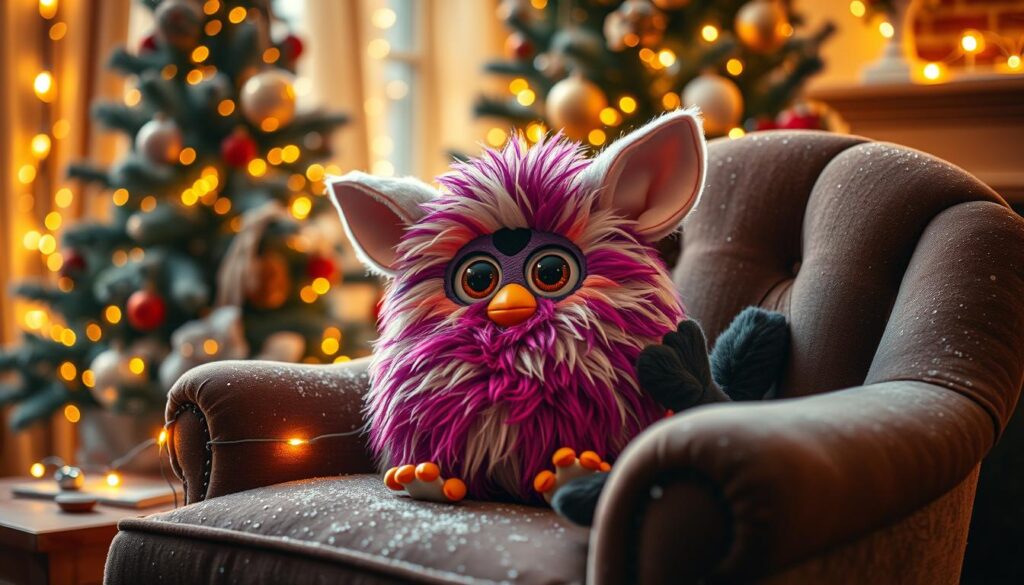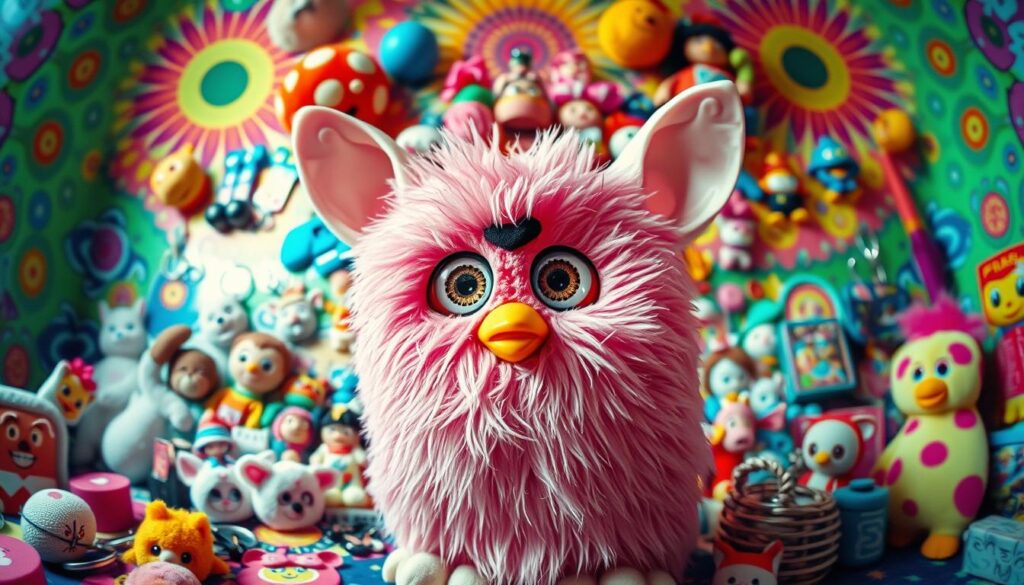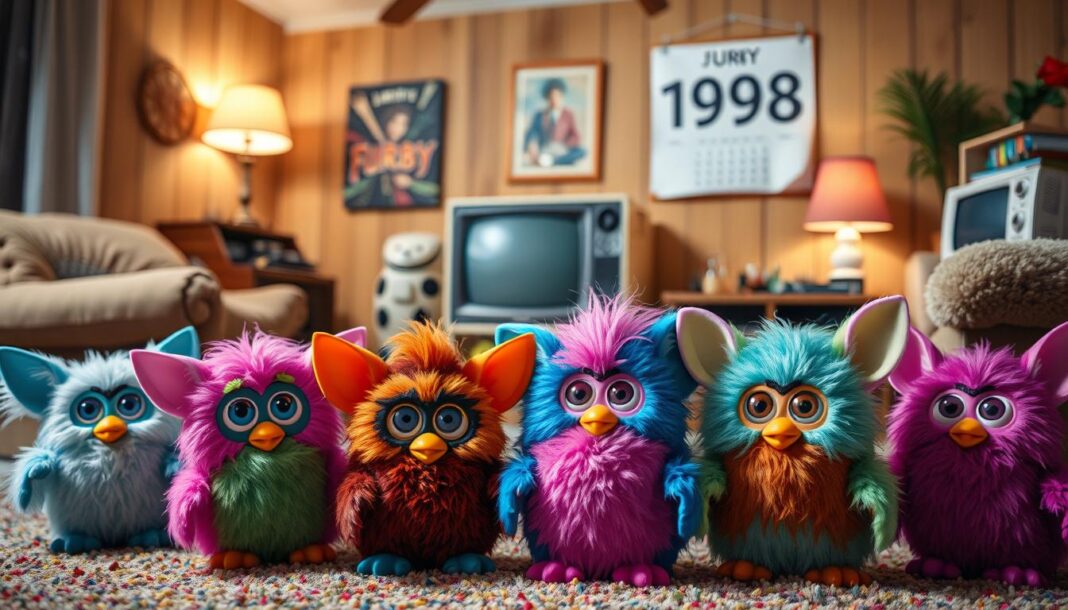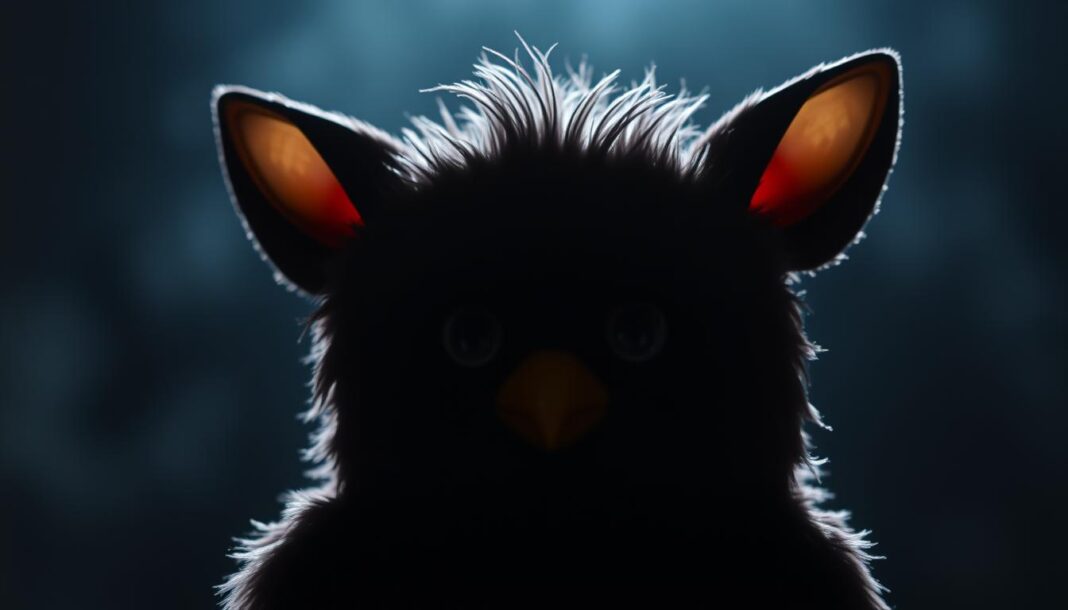In the late 1990s, a fuzzy, talking toy took the world by storm. The Furby became an instant phenomenon, selling over 40 million units in just three years. Its blend of technology and charm made it a must-have for kids and collectors alike.
Originally priced at $35, demand skyrocketed during the 1998-1999 holiday seasons. Some resellers even charged $300 or more. With 14 language options, its popularity spread globally, cementing its place in toy culture.
More than just a toy, Furby was the first successful domestic robot. Its quirky personality and evolving speech patterns captivated users. Today, nostalgia keeps it alive in the collector’s market, proving its lasting impact.
From its 1998 release to modern relaunches, Furby remains a beloved icon. Whether remembered for its charm or its controversial moments, this little gadget left a big mark.
The Birth of a Phenomenon: How Furby Took Over the 90s
Dave Hampton and Caleb Chung’s invention became an overnight sensation in the toy industry. Their fuzzy, talking creature blended cutting-edge tech with charm, captivating kids and adults alike. The journey from sketchpad to store shelves was anything but simple.
Dave Hampton and Caleb Chung’s Vision
Hampton, a Navy veteran, crafted Furbish—a fictional language inspired by his travels. Chung, a mechanical engineer, brought the toy’s movements to life. Together, they spent 18 months perfecting their prototype, facing hurdles like battery life and speech intelligence.
“We wanted a toy that felt alive. It wasn’t just about circuits—it was about personality.”
Tiger Electronics saw potential and backed the project. Their $35 retail price aimed to make Furby accessible, but demand would soon outpace production.
1998 Launch: The Toy That Broke All Records
Furby debuted at the 1998 American International Toy Fair. By Christmas, shelves were empty. Over 1.8 million units sold that year, skyrocketing to 14 million in 1999. Scalpers charged $300, turning Furby into a holiday battleground for parents.
| Feature | Furby | Tamagotchi |
|---|---|---|
| Interaction | Speech & movement | Button-based |
| Price (1998) | $35 | $15 |
| Units Sold (1999) | 14M | 10M |
McDonald’s even partnered with Tiger Electronics for a UK Happy Meal promotion in 2000. Meanwhile, Richard C. Levy’s licensing deals expanded Furby’s reach globally. The Furby’s unique language and evolving behavior kept it ahead of competitors.
Critics called it noisy; fans called it magical. Either way, Furby’s story was just beginning.
When Were Furbies Popular? The Golden Years of a Cultural Icon
Holiday seasons in 1998-1999 were defined by one must-have gadget. The original Furby’s blend of tech and charm created a perfect storm of demand. Stores struggled to keep up as 1.8 million units flew off shelves in 1998 alone.

1998-1999: The Holiday Season Craze
Sales peaked during Christmas, with 14 million units sold in 1999. Scalpers exploited shortages, listing Furbies on eBay for 3-10 times the $35 retail price. News outlets dubbed it the “craze of the decade.”
Tiger Electronics expanded the line with 24 colors of Furby Babies in 1999. These smaller, lighter versions targeted younger kids. Rare variants like the “Peach Furby” now fetch $500+ in the collector’s market.
| Model | Release Year | Units Sold | Notable Feature |
|---|---|---|---|
| Original Furby | 1998 | 1.8M | Furbish-to-English learning |
| Furby Baby | 1999 | 6M | 24 color options |
From Playrooms to eBay: The Collector Boom
Adults soon joined the frenzy, hunting rare original models. The FBI investigated scams involving fake listings, while newspapers ran classifieds for “Furby swaps.”
McDonald’s capitalized with Shelby the Clam, a Furby friend, in Happy Meals. Meanwhile, lawsuits emerged over unlicensed Gizmo hybrids. By 2000, 1 in 3 U.S. households owned some version of the toy.
Furby’s Cultural Footprint: More Than Just a Toy
Beyond toy stores, Furby carved its name into pop culture history. This fuzzy creature became a staple in TV shows, movies, and even urban legends. Its blend of technology and personality made it a storytelling icon.

Appearances in TV, Film, and Urban Legends
Furby popped up in *The Simpsons* and the 2019 thriller *Uncut Gems*. It even starred in *Mitchells vs Machines*, proving its lasting appeal. SNL parodied its chaotic charm, while creepypasta tales spun yarns about “haunted” units.
In 2016, The Weinstein Company planned a Furby film. The project collapsed with the studio’s bankruptcy, but the toy’s story lived on. Fans still debate rumors of Furbies “waking up” at night—a testament to its eerie allure.
The Gremlins Lawsuit and Other Legal Drama
Hasbro fiercely protected its brand. They sued over a *Gremlins*-inspired toy, claiming it copied Furby’s design. The Gremlin-Furby legal clash became a landmark case in toy copyrights.
In 2017, the Furby Connect faced backlash for Bluetooth vulnerabilities. Russian intelligence agencies banned it, fearing data leaks. Yet, these controversies only fueled its mythos.
| Cultural Impact | Legal Battles |
|---|---|
| TV/film cameos (*The Simpsons*) | Gremlins copyright lawsuit |
| Urban legends (“possessed” Furbies) | Hasbro’s $335M Tiger acquisition |
| SNL sketches | Bluetooth security concerns |
From screens to courtrooms, Furby proved it was more than a toy—it was a cultural phenomenon.
Inside Furby’s Tech: The Evolution of an Interactive Toy
Hidden beneath Furby’s fuzzy exterior was groundbreaking technology that changed interactive toys forever. Its 6502 microprocessor with 80KB ROM gave it surprising smarts for a 1998 toy. This little friend could learn, react, and even communicate in its own unique way.
From Furbish to AI: How Furby “Learned” English
The original Furby spoke Furbish but gradually used English phrases. This wasn’t random—it followed a programmed learning algorithm. Sensors tracked playtime to determine when to introduce new words.
Texas Instruments’ TSP50C04 chip processed voice inputs. Infrared ports let Furbies “talk” to each other. Owners loved discovering how their toy’s personality developed over time.
2005’s Emoto-Tronic Upgrade and Beyond
The 2005 version added voice recognition through Emoto-Tronic technology. Servo motors replaced clunkier mechanics for smoother movements. This year marked Furby’s leap into modern interactivity.
| Feature | 1998 Model | 2005 Model |
|---|---|---|
| Processor | 6502 8-bit | 32-bit ARM |
| Memory | 128B RAM | 4KB RAM |
| Eyes | Plastic | LCD eyes |
By 2012, Furbies gained app connectivity. The 2016 Furby Connect introduced full-color LCD eyes. Each production cycle brought smarter sensors and richer colors.
Today’s models boast 600+ response databases. The evolution continues as Furby remains a benchmark for toy interactivity.
Controversies and Bans: Why Furby Scared Governments
Government agencies raised eyebrows when Furby’s technology sparked security fears. This seemingly innocent toy became a national security concern, worrying parents and officials worldwide. From intelligence hubs to airline cabins, restrictions followed its release.
The NSA’s Unexpected Toy Problem
In 1999, the NSA banned Furbies from headquarters. Leaked memos cited concerns about its microphone potentially recording classified discussions. Though tests proved the toy couldn’t store data, the ban made news globally.
Tiger Electronics clarified that Furby’s speech chip had limited memory. “It couldn’t learn new words, just reveal pre-programmed English phrases,” their statement read. Yet the myth persisted, fueled by Cold War-era tech paranoia.
Flight Risks and Global Suspicion
The FAA restricted Furbies on planes until 2000. Officials worried its infrared sensors might interfere with navigation systems. Similar bans emerged in Russia and the UK during peak years of popularity.
| Organization | Restriction | Duration |
|---|---|---|
| NSA | Headquarters ban | 1999-2000 |
| FAA | Flight restrictions | 1998-2000 |
| Russian FSB | Bluetooth ban | 2017 |
Modern versions faced new scrutiny. The 2017 Furby Connect’s Bluetooth vulnerability allowed hackers to access nearby devices. As security experts noted, this mirrored growing smart toy concerns.
Today, these controversies remind people how playthings can challenge privacy norms. Furby’s journey from toy chests to watchlists shows technology’s unpredictable way of shaping our world.
From Attic Treasures to Modern Collectibles: Furby’s Lasting Charm
Decades after its debut, the fuzzy toy still captivates kids and collectors. Vintage 1998 models now sell for $300+ in mint condition, while 2023 editions retail at $74.99. The market thrives with rare colors and limited editions.
Gen Z fuels a revival through TikTok restoration videos and Etsy customizations. Artists modify eyes and fur, creating unique pieces. Comic-Con exclusives and Smithsonian-worthy originals drive demand.
Hasbro’s 58M+ sales prove its timeless appeal. From toys to wedding themes, this icon adapts across time. The new Furby line, like 2023’s Furblets, keeps the magic alive for children and nostalgic adults alike.


